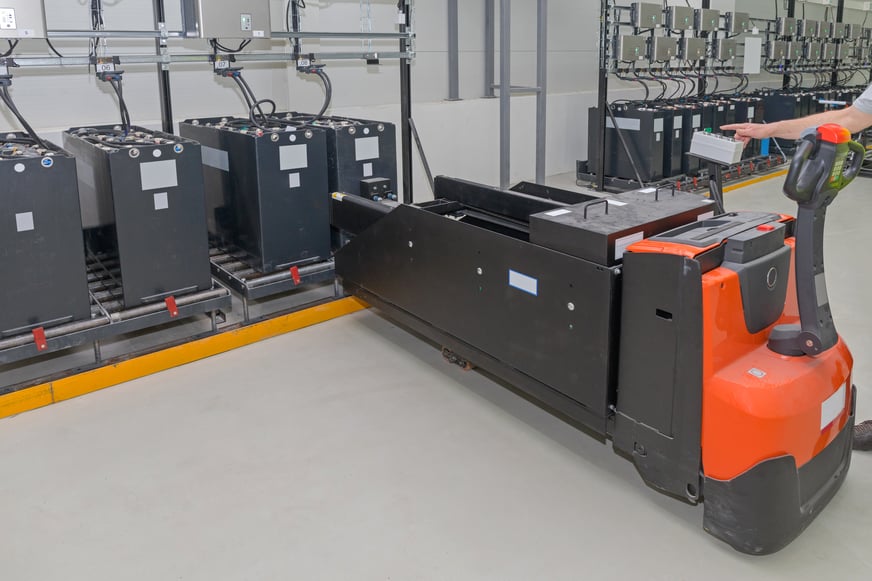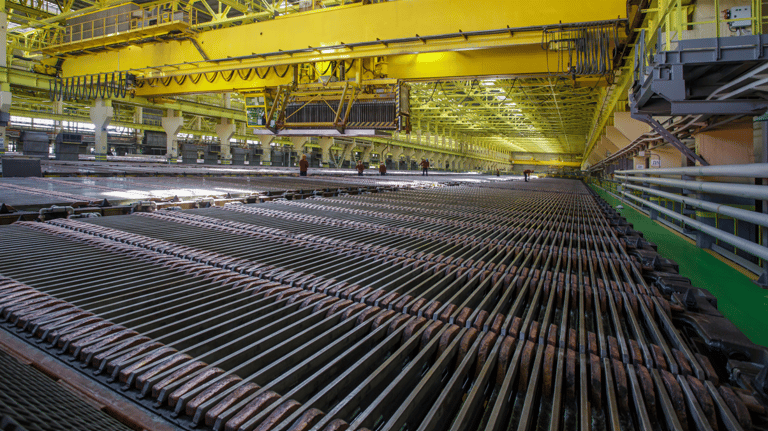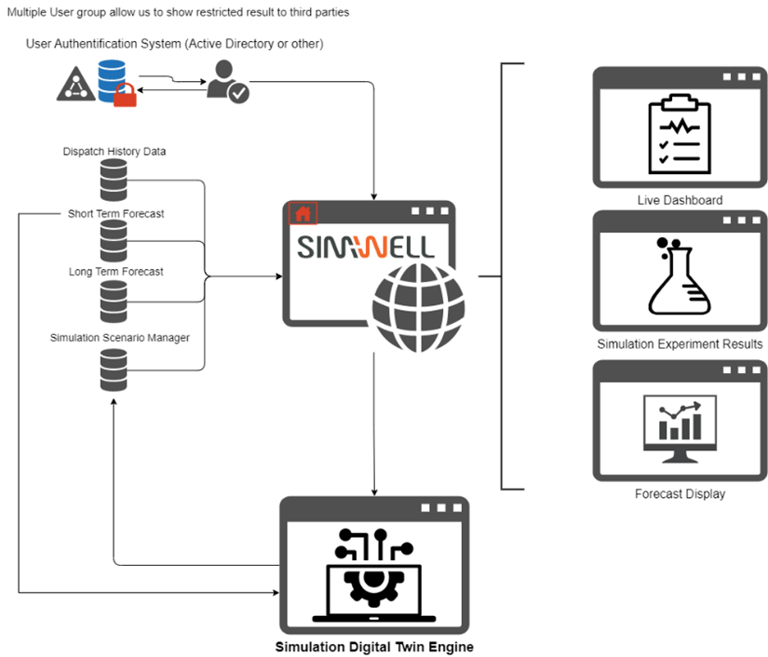What's the Role of a Digital Twin in the Distribution Center?
In today's supply chain management, the adoption of advanced technologies is more of a necessity than a choice, given the complexity and speed of market demands. Among these technologies, Simulation-Based Digital Twins stand out for their potential to compare scenarios and optimize operations whether you're evaluating strategic choices like the selection of automation, racks, and conveyors, tactical decisions like flow and slotting, or daily plans where you need to identify bottlenecks before they happen.
This post aims to offer a grounded perspective on how Digital Twins, when applied across a company's distribution centers, can pragmatically impact operations.
Understanding the Basics
A Digital Twin is essentially a virtual model of a physical system that can simulate, predict, and analyze its functions under various conditions. For distribution centers, this means having a dynamic digital representation of operations, inventory, workflows, and even human interactions within the warehouse environment. Here's an example of what a Digital Twin can look like of a warehouse operation.
Comparing Scenarios Before Making a CapEx Decision
One of the immediate benefits of implementing Digital Twin is the ability to compare alternatives before making a significant investment. Most Digital Twins start with simulation. Simulation has been used for over 40 years to support major investments. It's proven technology that can accurately capture the complexity of a distribution center.
Even more importantly, and what makes simulation unique, is its ability to capture variability and system interactions over time. Which in a distribution center is critical to right-sizing design and operating decisions.
Scenario Planning and Risk Management
Simulations excel in their ability to simulate 'what-if' scenarios, a critical feature for strategic planning and risk management. By testing various operational scenarios virtually, companies can better prepare for potential disruptions, such as supply chain delays or sudden spikes in demand. This proactive approach minimizes risk and ensures a more stable operation during unforeseen events.
When the simulation is connected to real time data we call that the Simulation-Based Digital Twin, or Digital Twin. With a Digital Twin in place operators have a scenario planning and risk-management tool in their hands where they can simulate “what-if” scenarios on upcoming peak, or planning how to work through backlog while avoiding overtime.
Operational Efficiency and Real-Time Decisions
One of the benefits of implementing Digital Twins is the boost in operational efficiency. By mirroring real-time operations, managers can identify bottlenecks, plan for delays, and optimize the use of resources. This kind of insight allows for more informed decision-making on the fly, potentially reducing downtime and improving overall throughput.
Sustainability and Compliance

Sustainability is an increasingly crucial aspect of supply chain operations. Digital Twins can play a significant role in reducing the environmental impact of distribution centers by optimizing routes, reducing energy consumption, and minimizing waste. Additionally, scenario comparison capabilities provided by Digital Twins can help compare EV fleet deployments so you right size vehicles and chargers, and for peak shaving charging schedules to CapEx and operating costs.
Workforce Implications
The impact of Digital Twin extends to the workforce as well. The detailed simulations provided by Digital Twins can serve as effective training tools, helping staff to understand the complex operational environment before making decisions that impact it.
In a world where labor shortages impact all companies, this can accelerate the learning curve for new leaders.
Collaboration and Alignment
A not-so-obvious advantage to Digital Twin is its ability to support collaboration and alignment.
Distribution Centers have many stakeholders. And often these folks are emotionally invested in the facility, processes, and people so when we start talking about change it can be hard to gain consensus. Digital Twin helps remove that emotion because all stakeholders can see a visual representation of the DC.
The same way the model is used to compare scenarios to right size an automation investment, it can be used to communicate to stakeholders why a new process is better. If, for example, we run a simulation of the as-is process (call it Scenario A) and one where we introduce a policy change (call it Scenario B), the animation will show the differences between A and B.
If Scenario B is showing less queuing and higher throughput than Scenario A, stakeholders are more likely to accept the change.
The animation paired with the data helps remove the emotion from a decision, and we always receive the feedback that this was an unexpected, but welcomed advantage to the Digital Twin.
What's the ROI?
In every application of simulation and Digital Twin we hear similar feedback on ROI. Here's a few examples from real customers.
- Cost Avoidance
- Right sizing ASRS - For one operation, simulation helped the business avoid the upfront and maintenance cost of 2 ASRS vehicles by proving the optimal number to meet demand
- Right size autonomous fleets - For another operation, simulation helped determine maximum product demands could be met with less AGVs and less AMRs
- System Design
- For most customers, we hear the ability to run their own experiments comparing scenarios and breaking points allows them to visualize decision impacts
- For every simulation project there are multiple design sessions that lead to key system changes and decisions on system design during early stages which helps the project manager for the operation stay on budget and on time, even when multiple stakeholders are required for a decision
- Reduced commissioning time by finding potential issues and bottlenecks in the virtual distribution center before implement in the real world. Many processes do not function entirely independent of each other which makes it critically important to evaluate decisions for the system because design changes can be made ahead of time instead of onsite which adds time and cost
- Risk Reduction
- Create an Incident Recovery Plan by testing RAM strategies (reliability, availability, and maintainability) virtually before there's an incident in the real world.
- When a portion of a facility has a failure or breakdown, quantify the ripple effect and minimize unintended consequences. Answer questions like, "How long can this line be down before we need to use overtime today?", "How long do we have before recovery gets worse?", "How do we decide what orders to fulfil if we can't meet all demand?"
- Staffing
- Create accurate staffing schedules on day 1. A simulation model can show the length of up time that is needed to run production and quantify how long staff needs to be available to finish a day's work including the daily variations and disruptions. By applying shift schedules to availability of staffing the model will identify production misses and give time for experimination with strategies to handle incomplete orders.
- Operating Costs
- Eliminate trial and error when creating new operations policies by evaluating new practices and guidelines for running a new facility before start up to eliminate wasted time. For example, adding time in WIP areas can vastly impact the equipment needed to run the system. Testing these kind of changes in the real world is disruptive, costly and time consuming. Testing in a simulation provides insights without having to purchase any additional equipment or change staff behavior.
- Reduce or eliminate facility disruption and reoptimize processes when introducing new equipment, policies, layouts, or other changes
Future Adaptability
Perhaps one of the more strategic benefits of Digital Twins is their role in future-proofing a business. As the digital model evolves alongside the physical distribution centers, it can integrate new technologies and methodologies, whether they relate to automation, data analytics, or emerging AI capabilities. This adaptability ensures that companies remain competitive as technological advancements continue to accelerate.
A Grounded Perspective
While the concept of Digital Twins might seem futuristic, its application in distribution centers is both practical and increasingly necessary. The technology's ability to enhance decision-making, improve risk management, and foster collaboration makes it a valuable tool in the modern supply chain arsenal.
However, the successful implementation of Digital Twins requires a thoughtful approach, balancing technological opportunities with the realities of operational integration and change management. If you're interested in Digital Twin and want to know what it's like to work with SimWell check out How It Works.
In conclusion, as businesses navigate the complexities of supply chain management, the adoption of Simulation-Based Digital Twins across distribution centers offers a grounded, strategic path to enhanced efficiency, resilience, and competitiveness. It's not about chasing the latest technology trend but rather about leveraging practical, data-driven insights to make smarter, more proactive decisions in a fast-paced world.
If you're considering if Simulation and Digital Twin is right for you, schedule a call with one of our experts. We'll answer your questions and help determine if it's the right fit for you.
About SimWell
SimWell is a global company specializing in simulation, optimization, and digital twin technology. We empower leaders and operators to maximize their current resources, optimize their operations, and elevate their performance with industrial applications using simulation and Digital Twin.
With SimWell as your partner, your team will have the tools to make confident decisions, optimize your process, and press fast forward on your business. Here's how it works.






